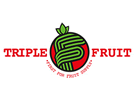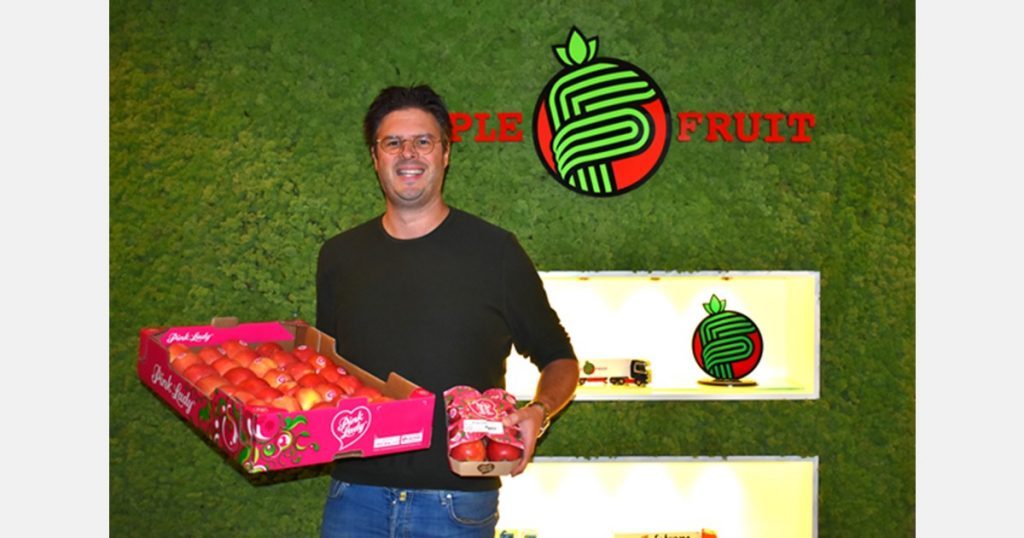Last month, in the Netherlands, the TripleF Fruit team relocated. They and another company both specialize in overseas top, stone, and soft fruit – in that order. The two businesses are sharing a 10,000m2 premises. “There’s plenty of room to grow, but in a controlled way,” says Matthijs Nijhoff.
His team has grown to 14 people. Matthijs has big plans for the building. He doesn’t yet want to reveal the details. But, in time, he wants to open a real Experience Center. He wants to inspire his retail customers as well as consumers. He hopes to partner with the established Fruit Tech Campus in this.
“I’ve always wanted to be as close to the trade as possible. I also wanted to provide as many in-house services as I can. I’ve changed my mind about that. Our volumes are very high at peak times. So, it’s not possible to do everything under one roof. You have to leave specialist work to the specialists. That’s why we work closely with other companies. They keep all our fruit in optimum conditions and custom-package it. We can, therefore, concentrate on our core business.”

And business is going well for now. The 2020 COVID-19 year, in particular, boosted TripleF Fruit’s overseas fruit sales enormously. “It was bizarre. There was blind panic. It seemed that, besides toilet paper, our retail customers needed only fruit. We had just recruited Rian Drost as our logistics manager. He was in for a wild ride,” laughs Matthijs. “That craziness is gone this year. Instead, there’s a slight counter-reaction. Sales, across the board, aren’t running smoothly at the moment.”
New Zealand apples
TripleF Fruit gets the complete overseas apple package. It consists of Gala, Granny Smith, Braeburn, Pink Lady, NZ Queen, and Fuji. The New Zealand top fruit season is currently well underway. “We’ve already received the bulk of the volume. But there’s still a lot on the way.” North-Western Europe is TripleF Fruit’s top sales market. They sell the New Zealand fruit mainly in the Dutch and German markets.
“Our clients always return to buy from us. We’re currently one of the five largest players that import overseas Pink Lady apples under license. We’ve made a real name for ourselves with that. From the start, our objective’s been to serve supermarkets with high-quality fruit. So, we primarily sell the New Zealand apples to retailers on a program basis. That’s supplemented by several niche buyers who are happy to pay for the product’s added value. If the quality necessitates it, we prefer ending the season early rather than stretching it out unnecessarily,” explains Nijhoff.
Eating quality is central
TripleF Fruit definitely doesn’t compete with Dutch fruit, says Matthijs. “We offer varieties not available in Europe. For example, we deliberately don’t import Conference pears from Chile. But, the eating quality is vital. You mustn’t disappoint people with that. That should be an important yardstick. More so than needlessly extending the season with local, inferior quality produce.”
“The political fuss over overseas fruit imports sometimes irritates me. [The Netherlands is] the world’s second-largest agricultural exporter. We rely on exports for about 75% of our pears. Let’s embrace that. After all, we work with natural products. We have to deal with the weather and climate changes. Then you need fruit from several countries to supply the market.”

According to Matthijs, there are ample opportunities for Dutch fruit, too, in the coming months. “There’s been a lot of frost damage in Italy and France. That’s affected the local top and stone fruit production. That should offer opportunities for Dutch fruit. We focus on the taste programs with our soft fruit too. That remains a constant battle between the fruit’s sugar content and how well they display. Programs with overseas plums, for example, are very difficult to achieve. However, we’re very successful with nectarines. These come from Chile and South Africa.”
During the Dutch soft fruit season, TripleF Fruit supplies retailers with local greenhouse strawberries. But, within this segment, blueberries form the largest product group by far. “We import mainly from Chile, Peru, South Africa, and Argentina. This market has already expanded tremendously in recent years. But we foresee further growth potential. The 125g packs used to be the norm. Nowadays, 500g containers are quite normal. There’s even demand for kilogram packs,” Matthijs concludes.
 For more information:
For more information:
TripleF Fruit
6 Watermolenweg
4191 PN, Geldermalsen, NL
Tel: +31 (0) 881 851 000
Email: info@tripleffruit.com
Website: www.tripleffruit.com


